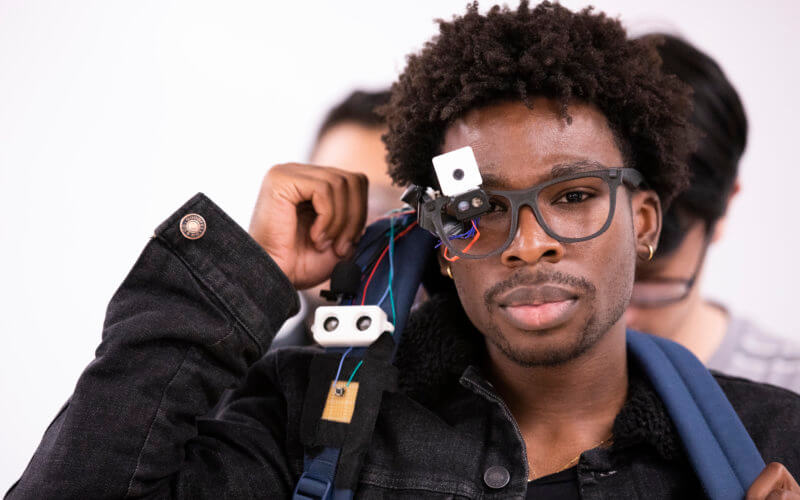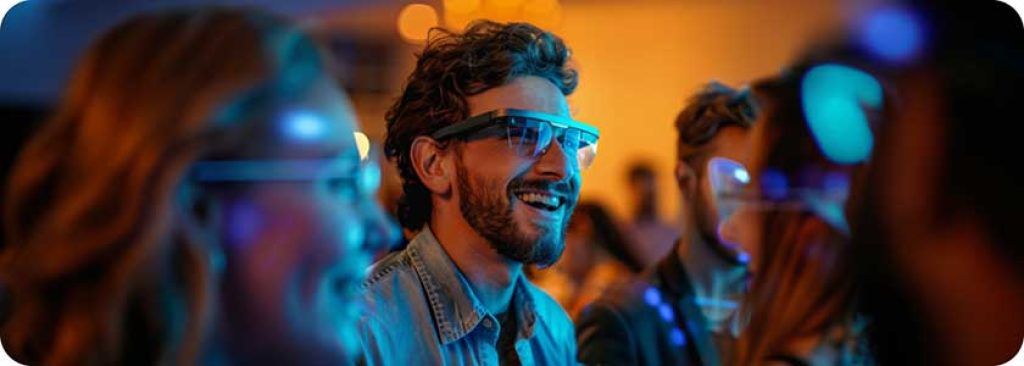Enhancing Accessibility Via Assistive Technology for the Blind
The integration of assistive technology for the blind represents a pivotal innovation in availability, fundamentally changing exactly how individuals navigate their atmospheres and engage with society. As we check out the varied types of assistive gadgets and their concrete influences on daily living, it ends up being crucial to check out how continuous technological developments are reshaping the landscape of assistance for the blind community.
Summary of Assistive Modern Technology
Assistive innovation refers to a variety of gadgets and software application created to improve the abilities of individuals with handicaps, consisting of those that are visually damaged or blind. This innovation plays a vital role in promoting self-reliance and enhancing the high quality of life for individuals. By giving different techniques for accessing details and executing daily tasks, assistive technology equips people to navigate their environments better.
The advancement and application of assistive technology welcome a variety of principles targeted at promoting availability. These principles consist of user-centered layout, which prioritizes the needs and choices of the person, and the assimilation of technology right into everyday activities. Such improvements guarantee that assistive devices are not only useful but easy and additionally intuitive to use.
Furthermore, assistive innovation includes a diverse range of options, from low-tech alternatives like magnifiers to sophisticated developments such as display visitors and Braille displays. The continuous evolution of this area is driven by the requirement to deal with the unique difficulties faced by people with visual disabilities (Wearable technology for low vision). As innovation remains to advance, the potential for enhancing accessibility and promoting inclusivity continues to be appealing, ultimately contributing to a much more equitable society

Kinds of Assistive Devices
Many types of assistive devices are readily available to support people that are visually damaged or blind, each designed to deal with specific demands and obstacles. These gadgets can be extensively categorized into 3 major kinds: low-tech, mid-tech, and state-of-the-art solutions.
Low-tech gadgets include products such as magnifiers, Braille labels, and tactile maps. These are reasonably easy tools that enhance the user's capacity to connect with their atmosphere without requiring complicated modern technology.
Mid-tech gadgets often include more innovative attributes, such as digital magnifiers and mobile Braille note-takers. These gadgets can offer capabilities like speech result, allowing individuals to accessibility details extra effectively.

Effect On Daily Living
The accessibility of different assistive gadgets significantly improves the high quality of life for people who are blind or visually damaged, impacting their day-to-day living in profound methods. By incorporating innovations such as display visitors, Braille displays, and audio description solutions into their regimens, users acquire higher freedom and self-reliance. These devices promote access to details, enabling people to execute day-to-day jobs, such as visit this website reviewing e-mails, navigating public areas, and taking pleasure in media material.
Furthermore, assistive gadgets encourage individuals to engage more fully in social interactions and area tasks. The ability to make use of smartphones equipped with access functions permits for seamless interaction and link with others. This connectivity fosters a sense of belonging and minimizes sensations of isolation.
In expert setups, assistive modern technology supports efficiency by enabling people to full job tasks efficiently. Tools like voice recognition software program and specialized magnifying devices allow customers to join the workforce on equal ground with their sighted peers.

Developments in Innovation
Current technical innovations have actually significantly transformed the landscape of tools available for individuals who are visually impaired or blind. The integration of synthetic intelligence (AI) and device discovering has triggered applications that enhance navigating and item acknowledgment. For instance, smart device applications can now utilize AI to identify and describe environments in real-time, offering users with useful contextual information.
Additionally, advancements in haptic technology have actually caused the growth of clever walking sticks equipped with sensing units that find challenges and provide responsive feedback. This equips users to browse their environment with raised confidence and independence. In addition, advancements in text-to-speech software and braille display screens have boosted the access of digital web content, enabling for smooth interaction with numerous media.
Wearable innovations, such as clever glasses, are additionally making strides in aiding visual disability. As modern technology continues to progress, the possibility for even more transformative devices continues to be on the horizon.
Future Trends and Innovations
As innovation quickly progresses, the future of assistive devices for individuals that are blind holds enormous promise. Technologies in artificial intelligence (AI) and artificial intelligence are positioned to change the way blind users interact with their environments. As an example, AI-driven applications are being established to improve item recognition, allowing individuals to determine and browse their environments with higher convenience and accuracy.
Additionally, developments in haptic responses modern technology are making it possible for the development of responsive maps and navigating aids that supply real-time details through touch. These advancements not just enhance wheelchair yet also foster self-reliance. Furthermore, wearable tools outfitted with enhanced truth (AR) attributes are arising, providing individuals aesthetic details through audio descriptions, therefore linking the gap in between the physical and digital worlds.
Moreover, the assimilation of clever home technology presents new possibilities for accessibility, allowing people to manage their living atmospheres with voice commands or mobile phone applications. As cooperation in between technology programmers and the blind area proceeds, the emphasis on user-centered style will certainly guarantee that future advancements are tailored to satisfy the distinct requirements of this population (Wearable technology for low vision). The trajectory of assistive technology promises a more inclusive and empowering future for people that are blind
Conclusion
In conclusion, assistive technology plays an important duty in enhancing accessibility for people with aesthetic disabilities. The diverse array of devices, including screen viewers and clever walking sticks, dramatically improves daily living and useful site cultivates freedom. Continuous innovations in innovation and user-centered design make certain that these devices provide properly to the one-of-a-kind needs of the blind area. As developments development, boosted inclusivity and empowerment can be expected, eventually enriching the top quality of life for those affected by aesthetic impairments.
The combination of assistive modern technology for the blind represents a pivotal improvement eye doctor appointment in ease of access, essentially altering exactly how people navigate their atmospheres and engage with culture.Assistive technology refers to a variety of tools and software created to improve the capacities of individuals with specials needs, consisting of those who are visually impaired or blind. Wearable technology for low vision.As modern technology rapidly advances, the future of assistive devices for people that are blind holds enormous assurance. The trajectory of assistive innovation guarantees an extra empowering and inclusive future for individuals that are blind
In verdict, assistive technology plays a vital duty in enhancing availability for people with aesthetic impairments.